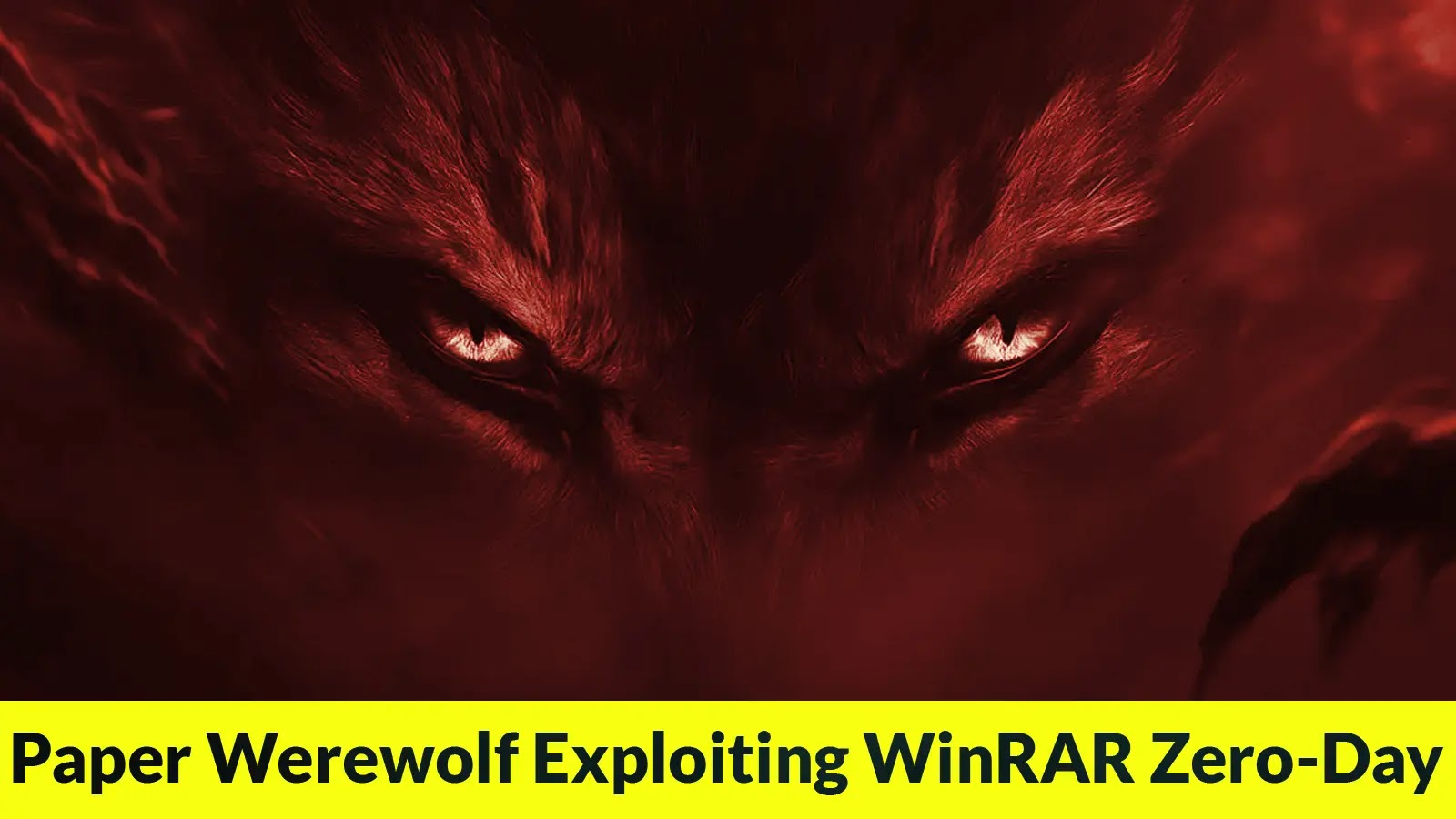
Paper Werewolf Exploiting WinRAR Zero‑Day Vulnerability to Deliver Malware
The digital threat landscape is in constant flux, with sophisticated actors continuously innovating their attack methodologies. A recent and concerning development involves the Paper Werewolf threat actor group, also known as GOFFEE, who have been observed leveraging a critical zero-day vulnerability in WinRAR. This campaign, targeting Russian organizations, highlights the persistent risk posed by unpatched software and the ingenuity of advanced persistent threat (APT) groups.
Understanding the Paper Werewolf Threat Actor
Paper Werewolf, or GOFFEE, is a formidable threat actor recognized for its advanced capabilities and targeted operations. Their current campaign demonstrates a strategic focus on exploiting novel security flaws to achieve their objectives. Unlike opportunistic attackers, groups like Paper Werewolf often invest significant resources in discovering and weaponizing zero-day vulnerabilities, making them particularly dangerous.
The WinRAR Zero-Day Exploitation
The core of this campaign lies in the exploitation of a previously unknown vulnerability within WinRAR archiving software. WinRAR is a widely used utility, making any flaw within it a significant concern due to its expansive attack surface. While the specific CVE number for this newly reported zero-day is not yet public, its active exploitation underscores the critical need for vigilance.
The attackers successfully exploited this flaw to achieve persistent access within targeted systems. The method of exploitation often involves crafting malicious archives that, when opened or processed by WinRAR, trigger the vulnerability, allowing for the execution of arbitrary code and the delivery of malware payloads.
Campaign Details and Impact
Researchers reported this campaign has been active since July 2025. This extended period of activity signifies a successful and sustained effort by Paper Werewolf to compromise their targets. The primary objective is to deliver malware, which can range from sophisticated backdoors for long-term espionage to ransomware for financial gain, or other destructive payloads. The targeting of Russian organizations suggests geopolitical motivations or specific intelligence objectives.
The use of a zero-day in a ubiquitous piece of software like WinRAR allows these attackers to bypass many traditional security controls that rely on known signatures or patterns. This makes detection and prevention significantly more challenging for organizations.
Remediation Actions
Given the severity of a zero-day vulnerability being actively exploited, immediate and proactive measures are crucial. While a patch for this specific zero-day is not yet available at the time of this report, general security hygiene and rapid response protocols can mitigate the risk.
- Isolate and Patch: While awaiting a direct patch for the WinRAR zero-day, ensure all other software, especially operating systems, web browsers, and other commonly used applications, are fully patched and up-to-date. Regular patching cycles are fundamental.
- Implement Application Whitelisting: Restrict the execution of unauthorized applications to prevent malware delivery and execution, even if a vulnerability is exploited.
- Enhance Endpoint Detection and Response (EDR): Utilize advanced EDR solutions to detect anomalous behavior, suspicious processes, and lateral movement that might indicate an active compromise.
- Network Segmentation: Implement robust network segmentation to limit the lateral movement of attackers in case of a successful breach.
- Employee Training and Awareness: Educate users about the risks of opening suspicious attachments and files, even from seemingly legitimate sources. Phishing attempts often precede such exploits.
- Monitor for Indicators of Compromise (IoCs): Stay updated with threat intelligence feeds regarding Paper Werewolf (GOFFEE) and look for specific IoCs related to their tools, tactics, and procedures (TTPs).
- Backup and Recovery: Regularly back up critical data and test recovery procedures to minimize the impact of a successful attack.
Relevant Tools for Detection and Mitigation
| Tool Name | Purpose | Link |
|---|---|---|
| Endpoint Detection and Response (EDR) Solutions | Detect and respond to advanced threats, including suspicious process execution and file modifications. | (Vendor Specific – e.g., CrowdStrike Falcon, SentinelOne, Microsoft Defender for Endpoint) |
| Vulnerability Management Systems | Identify and prioritize vulnerabilities across your infrastructure. | (Vendor Specific – e.g., Tenable, Qualys, Rapid7) |
| Network Intrusion Detection/Prevention Systems (NIDS/NIPS) | Monitor network traffic for suspicious patterns and block malicious activity. | (Vendor Specific – e.g., Cisco Firepower, Palo Alto Networks, Suricata, Snort) |
| Application Control Software | Whitelisting and blacklisting applications to prevent unauthorized execution. | (Vendor Specific – e.g., Ivanti Application Control, Microsoft AppLocker) |
| Threat Intelligence Platforms (TIPs) | Aggregate and analyze threat data, including IoCs for APT groups like Paper Werewolf. | (Vendor Specific – e.g., Anomali, Recorded Future, Palo Alto Networks Unit 42) |
Conclusion
The exploitation of a WinRAR zero-day by the Paper Werewolf group serves as a stark reminder of the evolving and persistent threats faced by organizations. While specific details on the CVE and its patch are pending, the insights into this campaign reinforce the importance of a multi-layered security strategy. Proactive vulnerability management, robust endpoint and network defenses, and continuous threat intelligence monitoring are not mere suggestions; they are critical components of a resilient cybersecurity posture that can withstand the ingenuity of sophisticated threat actors.





